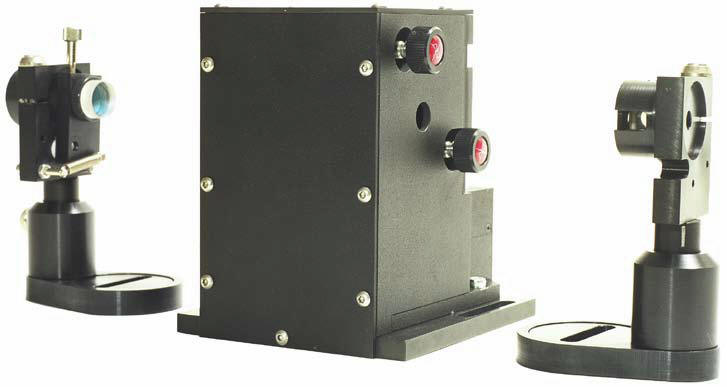
Pismo pulse pickers
The
Pismo pulse picker system comprises two main parts – a control and power
supply unit (CPSU) and a Pockels cell with a HV driver.
The CPSU realizes the following functions: synchronization to a femtosecond
pulse train, amplifier pump laser start (flash-lamp or diode pumped with
acoustooptical or electrooptical Q-switch) that is synchronous to the picked
pulses, oscilloscope synchronization, streak-camera synchronization and other
equipment that requires synching to a fs pulse train. The CPSU has 5 independent
delay channels that are rigidly fixed to a fs pulse train (jitter <200 ps). The
delay channels are used for starting Pockels cells, pump lasers and other
equipment. One CPSU can manage up to 4 Pockels cells.
The Pockels cell consists of a HV pulse driver and an electrooptical crystal.
The CPSU supplies necessary voltage to the HV driver (300-500 V, DC) and sends
the start signal. The HV driver produces a bell-shaped HV pulse with duration of
<10 ns at level 10 % from maximum (rise/fall time <4 ns). This pulse is then
supplied to the DKDP electrooptical crystal.
Pockels cell can be purchased separately - request a quote

Typical Specifications
Pismo OG11/1 pulse picker system
Pulse picker system with synchronization and control electronics.
Pockels cell crystal: DKDP, 6x6x16 mm3, ARC 700-1000 nm (clear aperture – 5 mm),
other apertures on request
HV pulse amplitude: up to 11 kV (HV pulse has the amplitude ~11kV with duration
10 ns at level 10% of maximum)
Repetition rate: single-shot – 1 kHz
RF source: 30-120 MHz
RF input: optical (internal fiber coupled photodetector with 1.5 m length
plastic fiber)
System transmission: >78%@full range; >85% @ 750-850nm
Contrast ratio: >1:1000
USB control with drivers and software included
Also included:
Two Glan-Taylor calcite air-spaced polarizers with mounts
1.5-meter optical fiber for synchronization
LabView-compatible software
request a quote - pdf brochure
As the name implies pulse pickers are used to selectively pick off pulses
from the pulse train of a femtosecond or picosecond laser. Pismo pulse picker
models are available as stand-alone devices that use a Pockels cell as an
ultrafast shutter. These pulse pickers allow a wide range of control over the
repetition rate of the pulse train. A single pulse can be selected from the
pulse train at a fixed frequency, increasing the contrast of the signal. All
models include a Pockels cell and synchronization unit, delay generator, and
high voltage driver unit. The pulse picker operation is based on the linear
electro-optic effect (Pockels effect). Pockels cells use an applied electric
field produces a birefringence in the cell that is proportional to the electric
field. The
Pockels cells included with the pulse pickers are made with a Deuterated
Potassium Dihydrogen Phosphate (DKDP) crystal. DKDP is an optical material known
for its wide transparency range and high optical damage threshold.
A pulse picker is used to pick out single optical pulses of picosecond or
femtosecond duration from a sequence of pulses and for controlling femtosecond
multipass and regenerative amplifiers.
Features:
• Single pulse selection from train of pulses
• External RF or optical signal trigger synchronization
• High voltage electrical pulse with adjustable delay
• High voltage electrical pulse with adjustable amplitude
• Two additional delayed pulses for measurement purposes
• Easy installation and alignment
• High efficiency and contrast ratio
• Rugged design
The Pismo control unit provides five output pulses with precise timing delays
that can be synchronized with various signals. Each delay channel consists of a
12 bit digital delay with 50MHz clock frequency and an approximately 40 ns range
of continuous delay. 50 MHz delay oscillator is phase-triggered, so that no one
period jitter occurs. In addition to the five delay channels, the control box
contains two 12-bit frequency dividers with prescalers. All delays have a common
start. The triggering signals for starting the delay can be chosen from two
external inputs (TTL and wide range adjustable) and frequency dividers.
This triggering signal can be synchronized with an optical signal (built-in Si
or InGaAs sensor with fiber-optic input), one of two external sources of RF, an
internal 100MHz crystal or can stay unsynchronized. Delays function in one of
five modes: free running, skipped, enabled, single shot asynchronous and single
shot synchronous. In the free running mode every triggering
pulse causes a delayed output pulse at every channel, except when there is a
frequency overrun. If the time between two triggering pulses is less then
admissible, the second pulse will be ignored. In skipped mode some channels act
every time, and some act only after a skipping signal edge takes place at the
nearest subsequent triggering pulse. Enabled mode is like skipped mode, but
output pulses are present if skipping signal has high level. In the single shot
asynchronous mode delay, output pulses appear at the nearest subsequent to
single shot command triggering pulse. The command can be given from an on-screen
menu, from an external button (optional) or a trough RS-232C interface. Single
shot synchronous mode, in contrast to asynchronous mode, gives output pulses
only after first skipping signal following single shot command. Any delay
channel can be separately turned into both skipped (behavior according to mode)
and unskipped mode (output pulse at every triggering pulse). The control unit
can also produce output pulse bursts with controlled length at every skipping
signal edge or single pulse command. This option is available only in skipped
and single pulse modes.
An electro-optical crystal (DKDP) is placed between two polarizers oriented at a
90° angle to one another. Linearly polarized light passes through the first
polarizer. By applying a high voltage (~ 10 kV) to the electrooptical crystal an
induced birefringence occurs. When the birefringent phase difference reaches /2,
polarization is rotated by 90° and linearly polarized light freely passes
through the second polarizer. When no voltage is applied the polarization does
not rotate and the second polarizer blocks the light.
Almost all of the device settings for the Pismo control unit are controlled with
one knob on the front of the unit. Parameters of interest are selected with the
help of
hierarchical menus, which appears at LCD display. The electro-optic Pockels cell
is driven by high voltage pulses (duration ~ 6 ns at level 10% of maximum)
controlled by the electronics synchronization unit.
request a quote - pdf brochure
Pismo Pulse Pickers: Electro-Optical
Ultrafast Shutters - pdf brochure -
typ.specs -
Pismo pulse picker
for laser wavelength: 1025~1045 nm
Femtosecond Pulse Pickers Pismo Questions and
Answers - 100kHz -
Pismo OG10B/100-1/DKDP 100kHz quote -
Pismo OG10B/100-1/BBO -
Pismo 8-1 Manual -
Pismo 8-10 -
Pismo 8-25 Manual -
QA1
- QA2
- QA3 -
QA4 -
QA5 -
Pockels Cell -
selection of pulses from a ~
100 MHz, 20 fs Ti:Sapphire laser -
pulse selection for polarization
flip - Pulse
peaker for Chameleon Ultra I from Coherent
Pulse picker for Tsunami laser
Pulse
Picker Pismo for Ti:Sapphire laser MIRA Optima 900-D (Femto,Pico) 76 MHz, 800 nm
from Coherent -
Pulse picker for polarization control
Pockels cell based on Rubidium
Titanyle Phosphate – RbTiOPO4 crystal
Ultrafast Shutter
Product news and updates - Training Workshops
- Featured Customer - Other News
 |
Trestles LH Ti:Sapphire
laser Trestles LH is a new series of high quality femtosecond Ti:Sapphire lasers for applications in scientific research, biological imaging, life sciences and precision material processing. Trestles LH includes integrated sealed, turn-key, cost-effective, diode-pumped solid-state (DPSS). Trestles LH lasers offer the most attractive pricing on the market combined with excellent performance and reliability. DPSS LH is a state-of-the-art laser designed for today’s applications. It combines superb performance and tremendous value for today’s market and has numerous advantages over all other DPSS lasers suitable for Ti:Sapphire pumping. Trestles LH can be customized to fit customer requirements and budget. Reserve a
spot in our Femtosecond lasers training
workshop in San Diego, California. Come to learn how to build a
femtosecond laser from a kit |
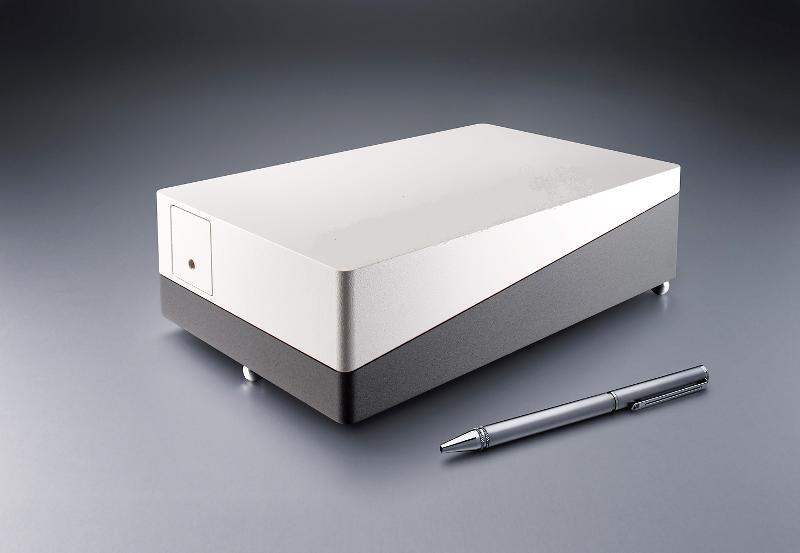 |
DPSS DMPLH lasers |
 |
New laser spectrometer
T&D-scan for research that
demands high resolution and high spectral
density in UV-VIS-NIR spectral domains - now available with
new pump option! The T&D-scan includes a CW ultra-wide-tunable narrow-line laser, high-precision wavelength meter, an electronic control unit driven through USB interface as well as a software package. Novel advanced design of the fundamental laser component implements efficient intra-cavity frequency doubling as well as provides a state-of-the-art combined ultra-wide-tunable Ti:Sapphire & Dye laser capable of covering together a super-broad spectral range between 275 and 1100 nm. Wavelength selection components as well as the position of the non-linear crystal are precisely tuned by a closed-loop control system, which incorporates highly accurate wavelength meter. Reserve a
spot in our CW lasers training
workshop in San Diego, California. Come to
learn how to build a
CW
Ti:Sapphire laser from a kit |
 |
Near IR viewers Ultraviolet viewers are designed to observe radiation emitted by UV sources. |
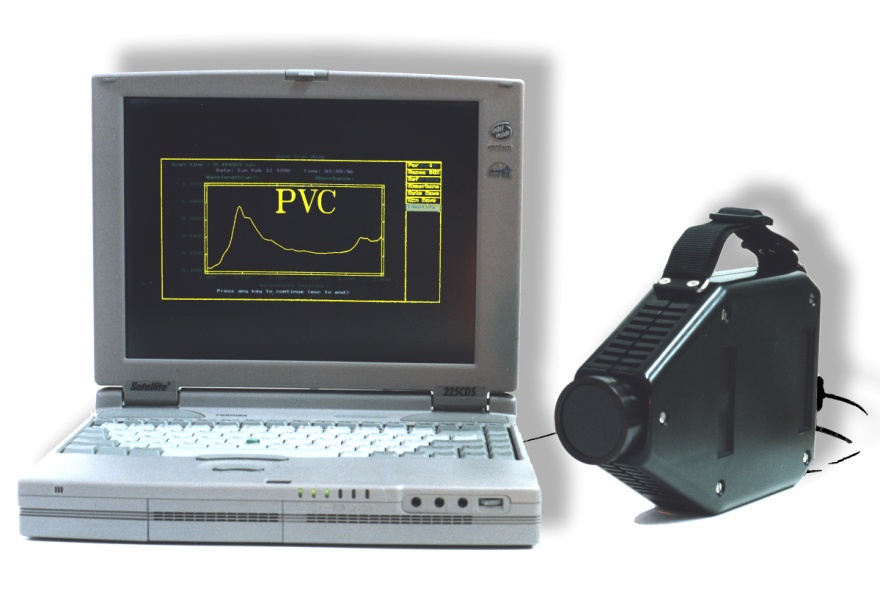 |
AOTF Infrared Spectrometer |
 |
Open Microchannel Plate Detector
MCP-MA25/2 -
now in stock! |
 |
Hummingbird EMCCD camera The digital Hummingbird EMCCD camera combines high sensitivity, speed and high resolution. It uses Texas Instruments' 1MegaPixel Frame Transfer Impactron device which provides QE up to 65%. Hummingbird comes with a standard CameraLink output. It is the smallest and most rugged 1MP EMCCD camera in the world. It is ideally suited for any low imaging application such as hyperspectral imaging, X-ray imaging, Astronomy and low light surveillance. It is small, lightweight, low power and is therefore the ideal camera for OEM and integrators. buy online |
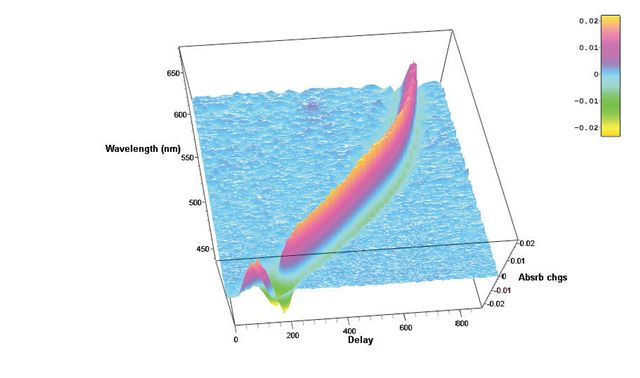 |
Hatteras-D
femtosecond transient absorption data acquisition system Future nanostructures and biological nanosystems will take advantage not only of the small dimensions of the objects but of the specific way of interaction between nano-objects. The interactions of building blocks within these nanosystems will be studied and optimized on the femtosecond time scale - says Sergey Egorov, President and CEO of Del Mar Photonics, Inc. Thus we put a lot of our efforts and resources into the development of new Ultrafast Dynamics Tools such as our Femtosecond Transient Absorption Measurements system Hatteras. Whether you want to create a new photovoltaic system that will efficiently convert photon energy in charge separation, or build a molecular complex that will dump photon energy into local heat to kill cancer cells, or create a new fluorescent probe for FRET microscopy, understanding of internal dynamics on femtosecond time scale is utterly important and requires advanced measurement techniques. Reserve a
spot in our Ultrafast Dynamics Tools
training workshop in San Diego, California. |
|
|
Beacon Femtosecond Optically Gated Fluorescence Kinetic Measurement System
-
request a quote -
pdf Reserve a
spot in our Ultrafast Dynamics Tools
training workshop in San Diego, California. |
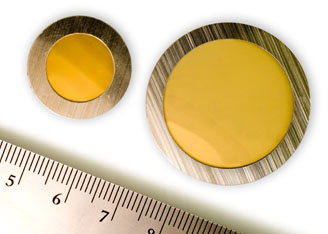 |
Terahertz systems, set ups and components New band pass and long pass THz optical filters based on porous silicon and metal mesh technologies. Band pass filters with center wavelengths from 30 THz into GHz range and transmissions up to 80% or better. Standard designs with clear aperture diameters from 12.5 to 37.5 mm. Long pass filters with standard rejection edge wavelengths from 60 THz into GHz range. Maximum transmission up to 80% or better, standard designs at 19.0 and 25.4 mm diameters. Excellent thermal (from cryogenic to 600 K) and mechanical properties THz products: THz Spectrometer kit with Antenna THz transmission setup THz time domain spectrometer Pacifica fs1060pca THz time domain spectrometer Pacifica fs780pca THz detectors: Golay cell and LiTaO3 piroelectric detectors PCA - Photoconductive Antenna as THz photomixer Pacifica THz Time Domain Spectrometer - Trestles Pacifica Holographic Fourier Transform Spectrometer for THz Region Wedge TiSapphire Multipass Amplifier System - THz pulses generation Terahertz Spectroscopic Radar Mobile System for Detection of Concealed Explosives Band pass filters with center wavelengths from 30 THz into GHz range Long pass filters with standard rejection edge wavelengths from 60 THz into GHz range Generation of THz radiation using lithium niobate Terahertz crystals (THz): ZnTe, GaP, LiNbO3 - Wedge ZnTe |
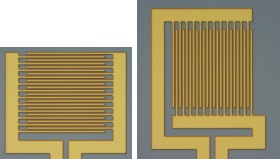 |
iPCA - interdigital Photoconductive Antenna for terahertz waves Large area broadband antenna with lens array and high emitter conversion efficiency iPCA with LT-GaAs absorber, microlens array for laser excitation wavelengths l £ 850 nm, adjusted hyperhemispherical silicon lens with a high power conversion efficiency of 0.2 mW THz power / W optical power. The iPCA can be used also as large area THz detector. The two types iPCAp and iPCAs have the same active interdigital antenna area but different contact pad directions with respect to the electrical THz field. Interdigital Photoconductive Antenna for terahertz waves generation using femtosecond Ti:Sapphire laser THz books |
 |
IntraStage lowers the cost
of test data management! Struggling with gigabytes or terabytes of test data? IntraStage easily transforms test data from disparate sources into web-based quality metrics and engineering intelligence you can use.
Contact
us today to discuss your test management requirements and specifications of your
application. |
Training Workshops
|
|
Come to San Diego next summer! Attend one of our training workshops in San Diego, California
during summer 2011 Del Mar Photonics has presented training workshops for customers and potential customers in the past 3 years. Our workshops cover scientific basics, technical details and provide generous time for hands-on training. Each workshop is a three-day seminar conducted by professional lecturer from 10am to 4pm. It includes lunch, as well as a training materials. We have also reserved two days for Q&A sessions, one-on-one system integration discussions, social networking, and San Diego sightseeing.
The following training workshops will be offered during this
summer: |
Featured Customer
|
|
Trestles LH10-fs/CW laser system at UC Santa Cruz Center of Nanoscale Optofluidics
Del
Mar Photonics offers new
Trestles fs/CW laser system which can be easily
switched from femtosecond mode to CW and back. Having both modes of operation in one system dramatically increase a
number of applications that the laser can be used for, and makes it an ideal
tool for scientific lab involved in multiple research projects. |
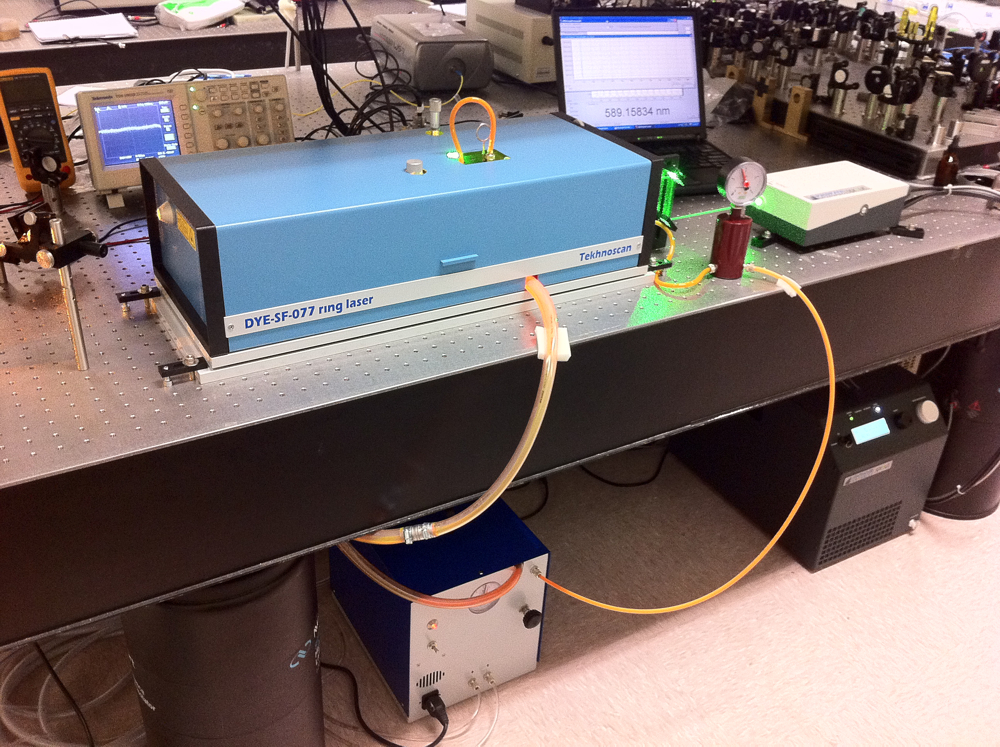 |
Frequency-stabilized CW single-frequency ring Dye laser DYE-SF-007 pumped by DPSS DMPLH laser installed in the brand new group of Dr. Dajun Wang at the The Chinese University of Hong Kong. DYE-SF-077 features exceptionally narrow generation line width, which amounts to less than 100 kHz. DYE-SF-077 sets new standard for generation line width of commercial lasers. Prior to this model, the narrowest line-width of commercial dye lasers was as broad as 500 kHz - 1 MHz. It is necessary to note that the 100-kHz line-width is achieved in DYE-SF-077 without the use of an acousto-optical modulator, which, as a rule, complicates the design and introduces additional losses. A specially designed ultra-fast PZT is used for efficient suppression of radiation frequency fluctuations in a broad frequency range. DYE-SF-077 will be used in resaerch of Ultracold polar molecules, Bose-Einstein condensate and quantum degenerate Fermi gas and High resolution spectroscopy |
Other News
Optical Society of Southern California meeting at UCSD OSSC 2011-04-27
Nd:YAG laser ordered by the University of Leon, UANL, Mexico
Wedge 50 Multipass Amplifier pumped with a Darwin-527-30-M DPSS Laser
ordered by Hong Kong customer
New
Trestles LH10-fs/CW femtosecond+CW laser ready for delivery to the
University of California Santa Cruz
Trestles femtosecond
Ti:Sapphire laser delivered to North Carolina State
University
Del Mar Photonics sponsor IONS (International OSA Network of Students)
conference IONS-NA-2 in Tucson, Arizona
IONS-NA-2
website
Best talk and best
poster awards at IONS-Moscow 2010 conference sponsored by Del Mar Photonics
Watch Del Mar Photonics
videos!
Del Mar Photonics is now on Twitter!
Del Mar Photonics featured components
Del Mar Photonics continuously expands its components portfolio.
 |
Solar
Prisms for Concentrating Photovoltaic Systems (CPV) Solar cells made of compound semiconductors such as gallium arsenide are very expensive. Usually very small cells are installed and various means such as mirrors, lenses, prisms, etc..are used to concentrate sunlight on the cells. Concentration photovoltaic technology (CPV) uses the solar radiation with an efficiency of 40%, double that of conventional solar cells Del Mar Photonics design custom Concentrating Photovoltaic Systems (CPV) and supply variety of the optical components for CPV such as solar prisms shown in the picture. |
|
|
Axicon Lens Axicon lens also known as conical lens or rotationally symmetric prism is widely used in different scientific research and application. Axicon can be used to convert a parallel laser beam into a ring, to create a non diffractive Bessel beam or to focus a parallel beam into long focus depth. Del Mar Photonics supplies axicons with cone angles range from 130° to 179.5° for use with virtually any laser radiation. We manufacture and supply axicons made from BK7 glass, fused silica and other materials. download brochure - request a quote |
 |
Rutile (TiO2) coupling
prisms Del Mar Photonics offers optical elements made of high quality synthetically grown Rutile Titanium Dioxide crystals. Rutile’s strong birefringency, wide transmission range and good mechanical properties make it suitable for fabrication of polarizing cubes, prisms and optical isolators. Boules having high optical transmission and homogeneity are grown by proprietary method. Typical boules have 10 - 15 mm in dia. and up to 25 mm length. Optical elements sizes - from 2 x 2 x 1 mm to 12.7 x 12.7 x 12.7 mm. Laser grade polish quality is available for finished elements. So far we the largest elements that we manufactured are 12 x15 x 5 mm, in which optical axis is parallel to 15 mm edge, 5 mm is along beam path, 12 x 15 mm faces polished 20/10 S/D, one wave flatness, parallelism < 3 arc.min. (better specs. available on request). more details - download brochure - request a quote |
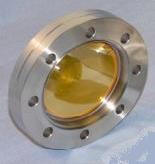 |
Vacuum viewport Del Mar Photonics offer a range of competitively priced UHV viewports , Conflat, ISO or KF including a variety of coatings to enhance performance. Del Mar Photonics viewports are manufactured using advanced techniques for control of special and critical processes, including 100 percent helium leak testing and x-ray measurements for metallization control. Windows Materials include: Fused silica, Quartz , Sapphire , MgF2, BaF2, CaF2, ZnSe, ZnS, Ge, Si, Pyrex. Standard Viewing diameters from .55" to 1.94 ". Coating - a range of custom coatings can applied - which include - Single QWOT - Broad Band AR - V coatings - ITO - DLC (Diamond like coating) more details - request a quote |

|
Hydrogen
Thyratrons are used in
such devices as radars with different power levels, high-power pulsed
technical, electrophysical, medical devices and lasers. Sophisticated
design and high quality ceramic-metal envelope determines long lifetime
and very accurate and reliable operation of hydrogen thyratrons under wide range of environmental
conditions. Applications: - radars - pulsed lasers power supplies - medical apparatus - electrophysical instrumentation Triggered Three-Electrode Spark Gap Switches are ceramic-metal sealed off gas discharge trigatron-type devices with a co-axial trigger electrode. These Gas Discharge Tubes contain no mercury and, due to an advanced design, feature high reliability and a long lifetime being operating under wide range of environmental conditions. Applications: - pulsed installation for processing materials - installations with plasma focus - pulse power supplies for lasers and other pulse equipment - medical apparatus such as lithotriptors and defibrillators - processing systems for petroleum wells |
 |
We are looking forward to hear from you and help you with your optical and crystal components requirements. Need time to think about it? Drop us a line and we'll send you beautiful Del Mar Photonics mug (or two) so you can have a tea party with your colleagues and discuss your potential needs. |
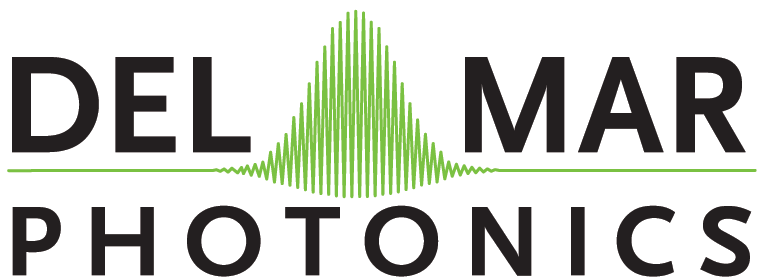
Del Mar Photonics, Inc.
4119 Twilight Ridge
San Diego, CA 92130
tel: (858) 876-3133
fax: (858) 630-2376
Skype: delmarphotonics
sales@dmphotonics.com